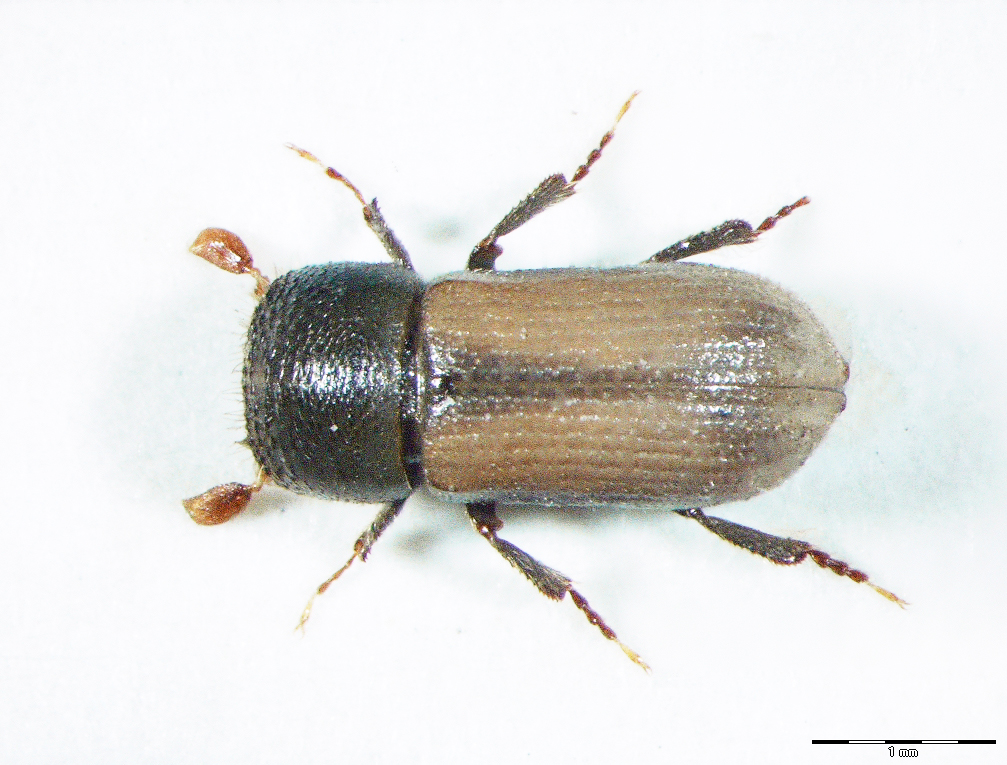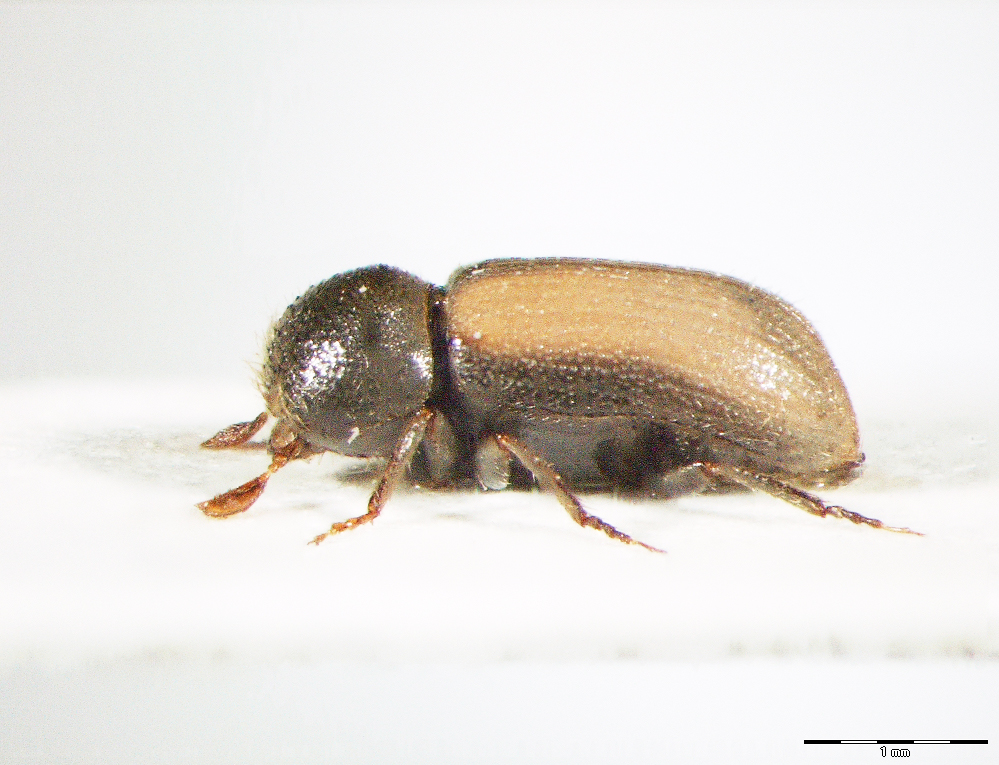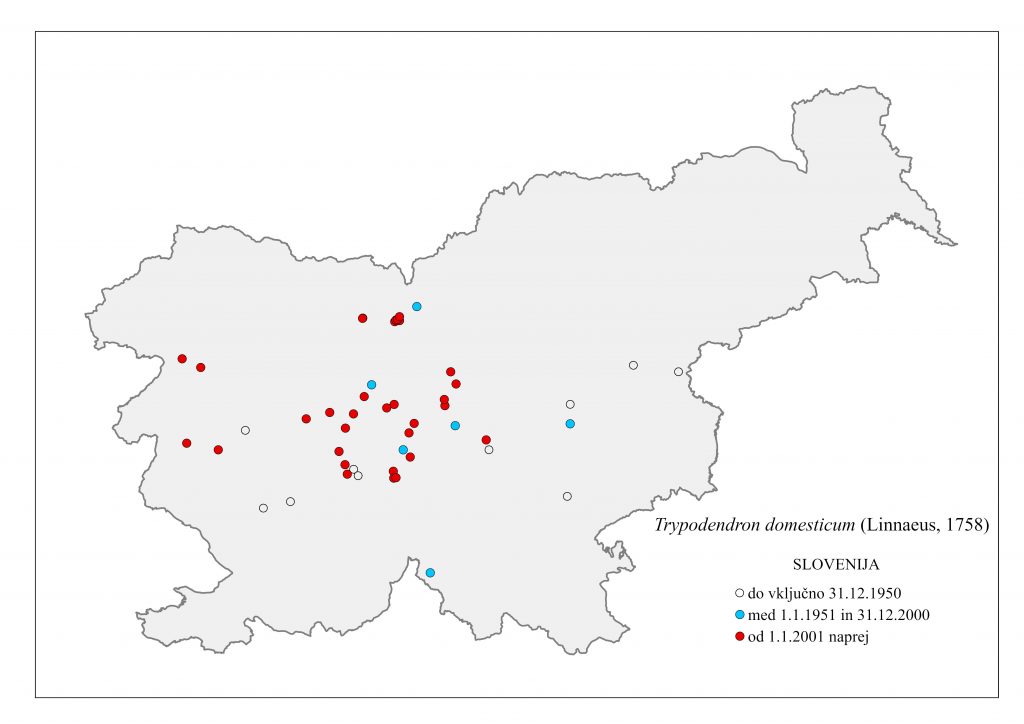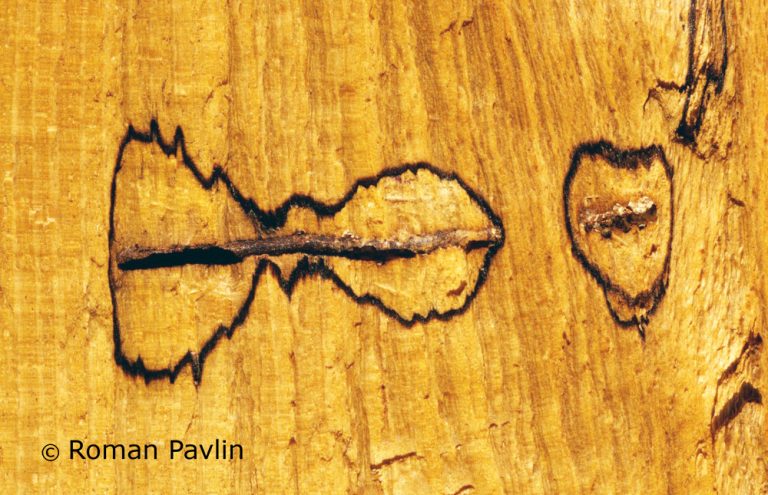39.01. Trypodendron domesticum (Linnaeus, 1758)
Presence
E: AU BE BH BU BY CR CT CZ DE EN FI FR GB GE GR HU IR IT LA LT LU MC NL NR NT PL RO SK SL SP ST SV SZ UK YU
A: TR
NAR
Figure 184: Trypodendron domesticum, dorsal, lateral (Photo: Maja Jurc)
Older catalogs and keys – citations of name
Siegel, 1866: Xyloterus domesticus Lin.; Grüne 1979: Trypodendron domesticum Linné, 1758; Freude, Harde, Lohse 1981: Xyloterus domesticus Linné; Titovšek 1988: Xyloterus domesticus (Linné); Pfeffer & Knížek 1993: Xyloterus domesticus (Linnaues, 1758); Pfeffer 1995: Xyloterus domesticus (Linné, 1758).
Figure 185: Trypodendron domesticum, distribution map according to historical and recent data
Ecology and presence in Slovenia
The species is distributed in Europe, the Balkans, Crimea, the Caucasus, Asia and the Nearctic. Siegel (1866) states that the species was “rare in Carniola, in beeches”, but the sites show that the species is now widespread throughout Slovenia, with the only regions without confirmed records Prekmurje, Koroška and Bela Krajina (Figure 185). T. domesticum is polyphagous on deciduous trees, common on beech (Fagus spp.), oak (Quercus spp.) and hornbeam (Carpinus spp.), but it also infests other deciduous trees, Acer pseudoplatanus, Acer spp., Alnus glutinosa, A. incana, Castanea sativa, Betula pubescens, Betula spp., Sorbus aucuparia, S. aria, Tilia spp., Prunus spp, Juglans regia, Morus alba, Robinia pseudoacacia, Crataegus spp., Fraxinus excelsior, Pyrus malus, Populus tremula and Salix spp.. In Slovenia, the species is frequently found in traps and on Fagus sylvatica, and only once on Quercus sp.. A monogamous xylomycetophagous species, it develops one generation per year and swarms in March. It inhabits freshly felled or weather-damaged trees, especially beech trunks and branches. It only colonises fresh wood which allows the fungus to develop. The tunnel system is ladder-shaped, with the females bringing spores and mycelium of endosymbiont fungi into it. The tunnels are covered in white mycelium on which the larvae feed. Later, the fungi die and the tunnels turn black. Adult length is 3.2-3.8 mm. The elytra are yellow, with longitudinal darker stripes and fine punctation. The scape of the antenna is pointed on the inside, which distinguishes it from other species of the genus Trypodendron (Figure 184). An ambrosia beetle, it causes considerable economic damage due to the ‘mushiness’ of the wood, the greatest damage is caused to the trunk of beech, where the maternal galleries are very deep. It is a aecondary species, the wood is locally stained due to the boring of the tunnel system, and also begins to rot after fungal infection. Pheromone: 3-Hydroxy-3-methylbutan-2-one (Francke et al. 1974, Francke & Heemann 1974).




